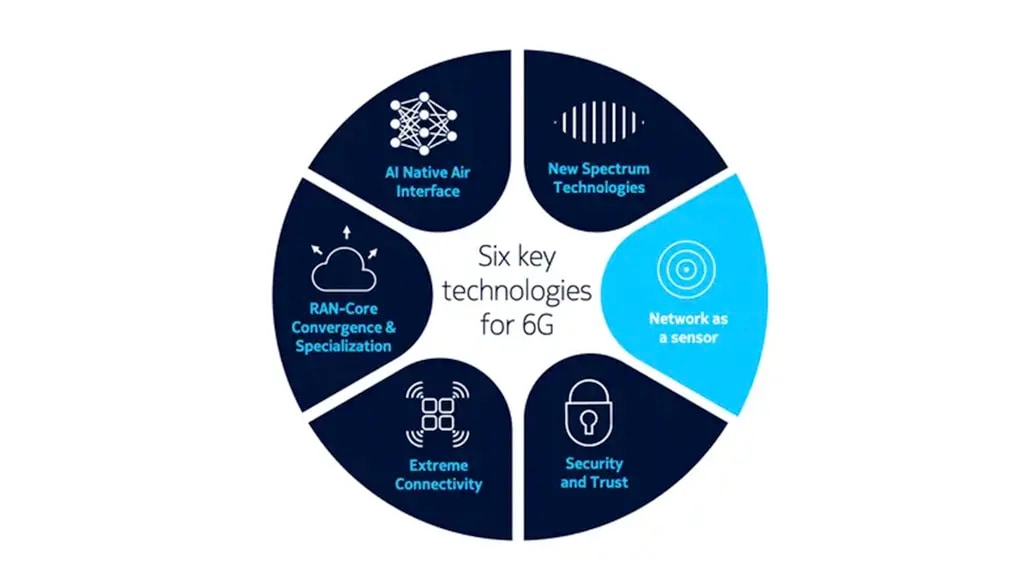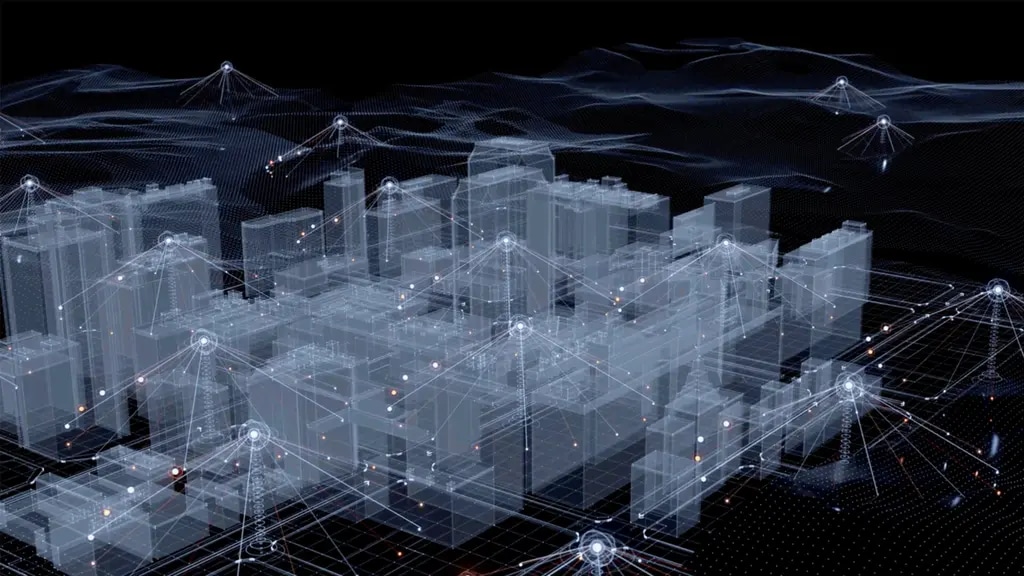Building a network with a sixth sense

Imagine a wireless communications system becoming aware of its environment, of the people and objects in its coverage area, without any active sensors or communicating devices present -- essentially a network that is also able to sense.
Sensing is fundamental to being a human, but while our senses are powerful, they are limited to our immediate vicinities. We must be present to sense temperature, pressure, weight or other physical parameters. We must be within a few hundred feet of the sound source to hear, and at best we can see only large objects a few hundred meters away. If we, however, give our networks the ability to sense, then our awareness is no longer limited to our surroundings. The network becomes our sixth sense.
In this network, radio signals transmitted by base stations and user devices don’t just carry data. Those wireless propagation channels also become a source of situational information. The network can compare received signals reflected off objects against their original transmissions to gather information about those objects. Those received signals can tell us not just about the presence of an object, but it can determine its type and shape, its relative location and velocity, and even its material properties.
As wireless communication networks are ubiquitous, a “mirror” or digital twin of the physical world can be created using network sensing. By interacting with this digital twin, we could extend our senses to every point the network touches. We could avoid traffic accidents by sensing unseen cars driving around a corner. We could interact directly with machines and robots remotely, seeing what they see, hearing what they hear, while directing their actions through simple hand gestures captured by the network. The new applications for this kind of network sixth sense are limited only by our imaginations.

We believe the sensing network will be a key component of 6G systems of the future. Nokia Bell Labs has just published a white paper exploring in detail how sensing could be implemented, but we’ll explore the fundamental concept of a network sixth sense below.
A natural evolution
The quest to augment our sensing with machines is as old as history. Think about the mouse trap – it senses the presence of a mouse when you are not there. Or the telescope that augments your vision to see the stars. More recently, the internet of things hosts billions of networked sensing devices that can extend the reach of the human senses far beyond their biological limits.
Radio signals have been a key part of the sensing infrastructure since James Maxwell in the 19th century first established that radio waves can be reflected off objects. Radar was first used to “see” ships in the fog, and from that point on, radio signals have been used extensively for numerous sensing applications such as navigation, ranging and object detection. In fact, it was the Nobel Prize-winning radio astronomy work at Bell Labs that established that the universe began with the Big Bang, allowing humans to sense what happened 14 billion years ago!
The logical next step is to extend these radio sensing capabilities beyond specialized machines and applications and place them in every cell and node of the wireless communication infrastructure that surrounds us today.
5G already supports radio-access-technology-based localization, but the current standards do not yet offer the in-built capability to detect objects not connected to the network. Such an integrated sensing capability will be natively designed into 6G, allowing sensing to be offered as a service right alongside communications.
The move to 5G made broader spectral bandwidths and higher frequency bands available, and the move to 6G will allow networks to climb into higher frequencies and even wider channels, which will be key to enabling sensing. Higher spectral bandwidths provide better range resolution as propagation conditions become more “geometrical” in nature. With these bigger bandwidths, the network will perceive radio frequency reflections as images similar to the visual images humans perceive with their eyes. Thus objects can be more easily and more accurately detected by a 6G network.

A new world of sixth-sense applications
This sensing network would open the door for a plethora of new services. In outdoor environments, the network could detect the location, speed and trajectory of all vehicles and pedestrians in an area, issuing warnings if any of their paths are about to intersect. Or the network could simply search the block for empty parking spots.
At work or at home, the network could detect if a vulnerable person has fallen and even “hear” their heartbeat, alerting emergency responders about possible trauma. Factories could use network sensing to allow humans and industrial robots to work side-by-side on the shop floor in perfect safety. End consumers could communicate with gestures to appliances, devices and robotic assistants, while those same visual cues could be used to communicate with the network itself. Virtual reality would greatly benefit as complicated input rigs would no longer be required to manipulate the digital world. The network would detect the motion of a hand or a leg – or even an eyelid – transmitting those cues to the VR simulation.
In many cases, network sensing would be used to complement other sensing technologies. Camera and network sensing data could be fused together to detect objects in smoke, fog, dust and darkness. Network sensing could also be used in places where, for privacy reasons, cameras aren’t allowed. RF sensing is less intrusive than video surveillance as radio signals already permeate our surroundings. For that same reason, network sensing is also perfectly safe. Network sensing won’t inundate the world with new radio waves. It will simply measure the properties of the signals already being used to transmit data across the network.
Finally, these radio sensors would transform how we optimize the communication network. A network more aware of its surroundings can anticipate factors that could lead to degradation of performance or interruption of service. For instance, the network could sense an arriving truck intersecting with a beam’s path. It could then send out new beams and or change transmit points to ensure service isn’t affected.
A new mobile revolution

Mobile networks have transformed almost all lives on the planet by allowing us to communicate from anywhere. Sensing-enabled mobile infrastructure could create a new revolution by extending our awareness beyond our immediate surroundings without the need for new sensing devices.
Creating this sixth sense will require more than just network-as-a-sensor technology. A myriad of other systems from AI/ML to digital twinning to new software and knowledge systems will be needed to interpret what the networks see and build the applications and services that will act upon that data. Sensing is also just one of the big transformations we anticipate in the move to 6G networks – one of six key components we’ve outlined in the Nokia Bell Labs white paper Communications in the 6G era.
In that 6G era, the inexorable demand for higher performance and higher capacities will require exploiting ever-higher bands, wider bandwidth signals, new solutions for joint communication and sensing, and new approaches to security and trust. These technologies will encourage a 6G design that is not only optimized for communication but also to help its users perceive and understand the physical world, thus augmenting human abilities in the most intuitive ways.
The full network sensing white paper is available for download here.
Interested in learning more about our 6G research and 6G vision. Check out our 6G page.

